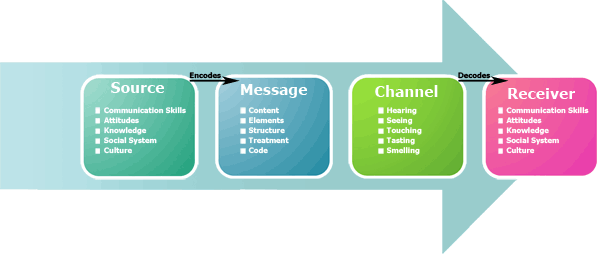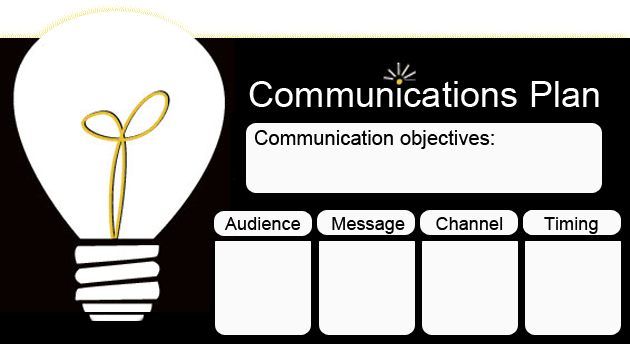Marketing Communications 
Trish Carlson
Marketing and Interactive Professional
I am a marketing and web professional with 14+ years of experience leading cross-functional business and creative project teams to conceptualize successful marketing communications leveraging research and insights to develop strategies and concepts that resonate with end users. I have expertise in graphic design, web design and development, customer and end-user research, e-mail, social media, and event management focused on building brand equity, customer loyalty, and improving relationships and results.
SMCR
Basic Model of Communication
All communication follows a basic theory . The SMCR model is a visual representation of this theory. The model consists of the sender, the message, the channel, and the receiver. To begin, a sender must chose the proper intention of the message such as to persuade or educate the receiver. Next, the content of the message is developed which can contain terminology, a general theme, conotations, or a combination of all three. The sender then uses a channel that will best convey the intended message. Finally, the receiver interprets the message thru senses and other facts of the receiver such as age, culture, knowledge and attitude.

The Changing Persona of B2B Communications
The B2B buying process has changed, and so has the B2B buyer.
Thanks to the Internet, social media and other major online influences, prospects are spending more time on the web doing independent research, obtaining information from their peers and other third parties. Companies
are meeting and engaging prospective buyers earlier than ever, and they must build their brand awareness as the preferred one” in their industry by building trust and differentiating their product or service.
Research shows that the B2B buying process is a highly emotional one, one that lends itself to irrational behaviors and heuristics, or quick methods of coming to a solution that are, at best, educated guesses. The emotion that most impacts the B2B buyer is fear (e.g. job security, loss of professional credibility, monetary loss, etc.) B2B
marketers must do their best to minimize this fear by eliminating risk, which can be done only through building trust with prospects.
Buyers have access to overwhelming amounts of information, but seek intelligence they can trust to support their
decision making process. Eliminate risk by developing thought leadership through relevant marketing assets, blog postings and more. By becoming a leader in your category, you build trust with prospective customers.
Planning Successful Communications
Getting the right messages across to the right audience in the right way
The first step in developing a successful communication is to put yourself in the shoes of your audience. What do they need to know, and want to hear? What's their preferred way of receiving information? What will stop them listening to what you have to say? And how will you know that they received and understood the message?
There is quite a bit more to good communications than preparing a good memo or presentation! It is important to create an audience-focused communication plan that's sure to get your message heard.
1. Understand Your Objectives
Be clear about your overall communication objectives. What do you want to achieve, when and why? Record your overall objectives in your plan.

2. Understand Your Audiences
Now identify and list your different audiences. This can initially seem quite difficult: For all but the simplest
communications plan, it's good to use Stakeholder Analysis to help you do this. Stakeholder Analysis helps you identify who to communicate with and why.
Drill down into your communication objectives and clarify specific objectives for each audience. A good way to do this is to think about the audience's needs – what do they need and want to know from you? List all the objectives (there may be several) for each audience in your plan.
3. Plan Your Message(s) and Channels
Once you have clarified your objectives and have a full understanding of the different audiences you need to communicate with, it's time to plan the communications – that means working out the messages needed to meet your objectives and when and how these will be delivered.
Messaging Vehicles:
|
|
4. Measure Effectiveness and Process Feedback
It's good to get feedback on the communications you have planned and implemented. Ask people from different
audiences how you are doing. Check if they understand the messages you need them to hear. By getting timely feedback, you can tune any future communications that you have planned to better meet people's needs and achieve the results you desire..
Recent Posts
» comming soon
Resume
Trish Carlson Resume
Interactive & Marketing Communications
Portfolio
web, design, marketing, communications
Testimonials
what people say
Capabilities
Web/Interactive
research, plan, design, launch, manage.
Marketing
research, planning, execution, results
Graphic Design
Web, Collateral, e-mail, ads, logos
Events
Planning, management, success

